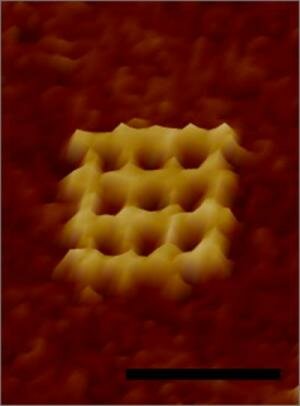DNA Could Be Backbone of Next-Generation Logic Chips
In a single day, a solitary grad student at a lab bench can produce more simple logic circuits than the world's entire output of silicon chips in a month.
So says a Duke University engineer, who believes that the next generation of these logic circuits at the heart of computers will be produced inexpensively in almost limitless quantities.
The secret is that instead of silicon chips serving as the platform for electric circuits, computer engineers will take advantage of the unique properties of DNA, that double-helix carrier of all life's information.
n his latest set of experiments, Chris Dwyer, assistant professor of electrical and computer engineering at Duke's Pratt School of Engineering, demonstrated that by simply mixing customized snippets of DNA and other molecules, he could create literally billions of identical, tiny, waffle-looking structures.
Dwyer has shown that these nanostructures will efficiently self-assemble, and when different light-sensitive molecules are added to the mixture, the waffles exhibit unique and "programmable" properties that can be readily tapped. Using light to excite these molecules, known as chromophores, he can create simple logic gates, or switches.
These nanostructures can then be used as the building blocks for a variety of applications, ranging from the biomedical to the computational.
"When light is shined on the chromophores, they absorb it, exciting the electrons," Dwyer said. "The energy released passes to a different type of chromophore nearby that absorbs the energy and then emits light of a different wavelength. That difference means this output light can be easily differentiated from the input light, using a detector."

"This is a closeup of a waffle. (Credit: Chris Dwyer)"
Source: Duke University
|